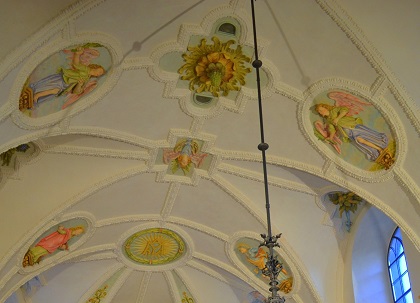The church was built in the years 1412–1426 for the Birgittine Order as a votive offering of King Ladislaus Jagiello for the victory in the battle of Grunwald predicted by St. Birgitta. According to the tradition, the church was erected by knights of the Teutonic Order held captive after the battle.
The church was build by the road that lead from to Kraków and connected then capital of Polish Kingdom with Vilnius.
An interesting piece of trivia is that to enter the church one must take the stairs... down. It's a proof of the difference in the ground level now and in the past.
In the first half of the XVII century the chancel was roofed with a barrel vault with lunettes and covered with Lublin Renaissance stuccos shaped like ribs and medallions decorated with figural and vegetal motifs. The stucco ornaments were also made in the southern wing of the convent. In the church attic fragments of frescoes have remained.
Neo-Gothic altars and the pulpit date back to the beginning of the XX century. The XVII century stalls feature paintings depicting the life of St. Birgitta. During the restoration of the church in the years 2009–2012, the remains of a chapel that had existed on the site before the erection of the church were exposed and now they can be seen under a glass floor. Tourists can visit the crypts and the church tower. The attic of the church is decorated with XV century gothic polychromes.




